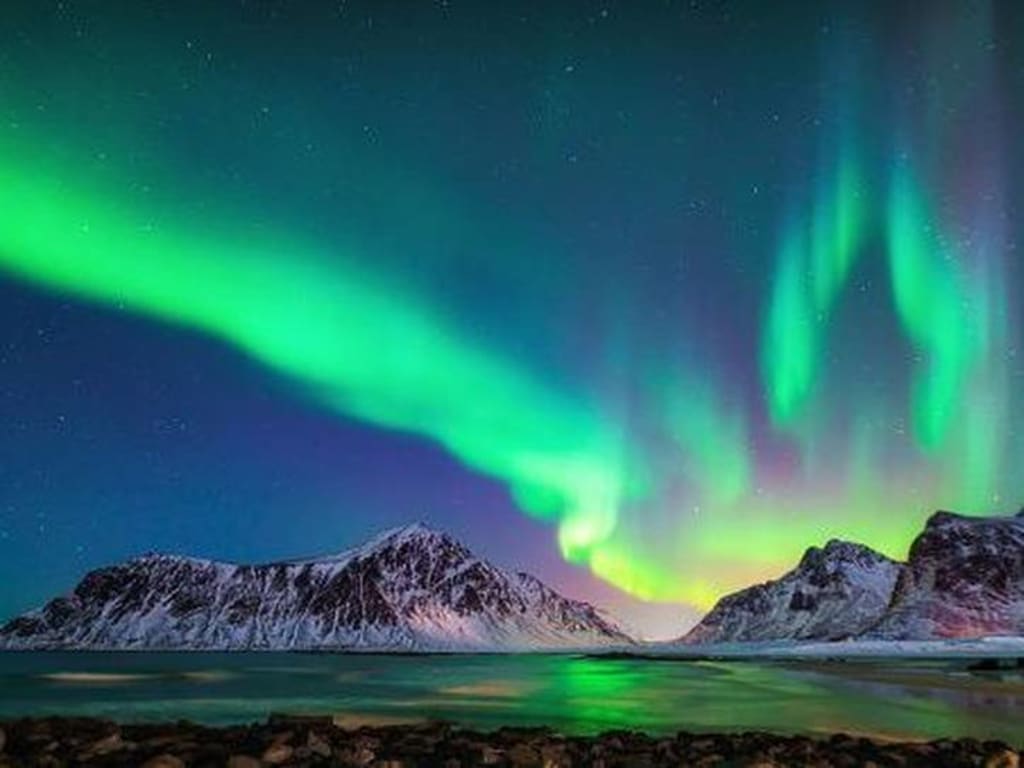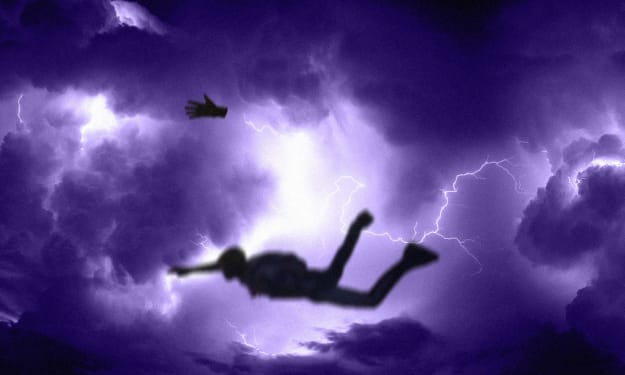From Lunar Rainbows to Bioluminescent Seas: Explore the Astonishing Phenomena That Leave Us in Awe
Nature's Dazzling Spectacles: Unveiling the Extraordinary Wonders of our World

As you stroll home during the late hours of the night, the recent rain has left the air feeling fresh and damp. In this moment, you spot something quite remarkable—a rainbow. However, since it's nighttime, you question its authenticity. Surprisingly, it is indeed real, but it's not your typical rainbow. This is what's known as a lunar rainbow, or a moonbow. Moonbows are incredibly fascinating and uncommon natural occurrences. They occur when light refracts through water droplets in the air, similar to the formation of a regular rainbow. However, the source of light in this case is not the sun but the moon itself. Due to the scarcity of light during the night, moonbows are much harder to spot. They often appear as pale white rings since the faint light doesn't allow our eyes' color receptors to detect vibrant hues. Additionally, experts mention that the brightness of the colors depends on the size of the water droplets in the air. Smaller droplets result in less vivid colors. If you wish to witness a moonbow, it's best to choose a night when the moon is full and low in the sky, unobscured by clouds. Moonbows can be observed near waterfalls like Niagara Falls, in locations such as Yosemite National Park, and other places in the United States. Nevertheless, nature's captivating phenomena are not limited to nighttime rainbows. Consider the enchanting brenticals, hollow icicles resembling underwater stalactites that form when cold saltwater freezes under the right conditions. Brenticals can extend to the ocean floor, attracting and freezing slow-moving underwater creatures like starfish. On a more hazardous note, sinkholes pose a greater danger. These formations occur when acidic water, having come into contact with plants or carbon dioxide, erodes soft types of rock such as gypsum or limestone. This erosion creates deep underground caverns that may unexpectedly collapse, resulting in a sinkhole. One such incident occurred in New York City, where a sinkhole swallowed a parked van in the summer of 2022. It was one among approximately 4,000 sinkholes reported throughout the city. Sinkholes are a widespread global issue and can emerge without warning. They often appear due to vast areas of groundwater drying up during droughts, leading to the formation of empty caverns that can collapse rapidly after heavy rains. Unlike sinkholes, some natural phenomena are more awe-inspiring than dangerous, such as the glowing beach caused by bioluminescent phytoplankton. These tiny organisms emit light when disturbed by waves and currents, transforming the ocean into a mesmerizing spectacle, particularly with the blue glow from the specific type of phytoplankton involved. Water spouts, also known as sea tornadoes, are another intriguing phenomenon. These funnel-shaped clouds descend from stormy skies above warm ocean waters. Although most water spouts don't draw in water, they are weak rotating columns of air hovering above the water's surface. Some start as land tornadoes, moving toward bodies of water where they develop into severe thunderstorms with hail, high winds, and lightning. During summer in forests worldwide, you may come across an eerie and faint glow known as Foxfire. This mystical phenomenon is rather straightforward, as it's produced by bioluminescent mushrooms growing on moist, decaying bark. The tropics are home to numerous such mushrooms, thanks to their damp forest conditions. To increase your chances of spotting these magical fungi, explore the forest during the wettest season and venture far from artificial light sources. Fire Rainbows, officially called circumhorizontal arcs, are summer phenomena resulting from sunlight interacting with frozen ice crystals in high-altitude clouds. Surprisingly, these vibrant rainbows don't require any rainfall. They primarily occur when the sun is high in the sky and specific cloud formations are present, making them more common closer to the equator. While Fire Rainbows may grace Los Angeles for half the year, cities like London only experience them for two months. Despite their appearance, the snow rollers seen in certain conditions are not handmade, but rather natural formations. When a layer of fresh snow covers ice and the temperature and wind speed are suitable, some snow breaks loose and starts rolling, accumulating more snow along the way and forming large snow donuts. The precise conditions required for snow rollers make them quite rare. Heading to the Giant's Causeway in Ireland, you'll witness an awe-inspiring natural formation called columnar basalt. These hexagonal columns originate from volcanic activity and form when lava cools rapidly, contracting and creating cracks on the surface. Although they appear man-made, their origin is purely natural. Observing the sky, you may catch a glimpse of the rare and enigmatic asperitas clouds. These clouds were not officially recognized until 2009 and often give off a stormy vibe. However, they usually dissipate quickly without resulting in a storm. Asperitas clouds form when colliding air masses or turbulent winds disturb the bottom layers of cloud formations, creating extraordinary shapes. In the icy realms of the Arctic, not all icebergs are monochromatic. Some feature vibrant colored stripes that contrast starkly with the usual white and blue hues. The process behind these stripes is relatively simple: as water freezes and melts on the iceberg's surface, dirt and mineral particles become trapped, forming multicolored stripes. Blue stripes appear when water becomes trapped between ice layers and freezes rapidly, preventing air bubbles from forming. When icebergs break off and fall into the ocean, algae present in the water may create yellow or green stripes. Finally, consider yourself fortunate if your long-awaited picnic is postponed by a storm, as it could never compare to the impressive phenomenon known as the Catatumbo. This is the world's longest-lasting lightning storm, occurring over Lake Maracaibo in Venezuela. Towering above regular thunderstorms, this natural spectacle takes place for approximately 140 to 160 nights per year, lasting up to nine hours a day and producing an astonishing 16 to 40 lightning flashes per minute. Contrary to the saying that lightning doesn't strike the same place twice, the Catatumbo storm defies this notion, with storm clouds gathering in the same location year after year.
In conclusion, the world is filled with extraordinary natural phenomena that captivate and inspire us. From the rare and ethereal lunar rainbows to the dangerous and unpredictable sinkholes, nature never ceases to amaze. Whether it's the enchanting glow of bioluminescent phytoplankton or the striking formations of icebergs with their vibrant stripes, these wonders remind us of the beauty and power of our planet. As we marvel at the mesmerizing asperitas clouds or witness the incredible endurance of the Catatumbo lightning storm, we are reminded of the grandeur and diversity of the natural world. So, let us embrace these extraordinary phenomena, cherish our planet's wonders, and continue to explore the bright side of nature's remarkable creations.





Comments
Mela Mandigma is not accepting comments at the moment
Want to show your support? Send them a one-off tip.